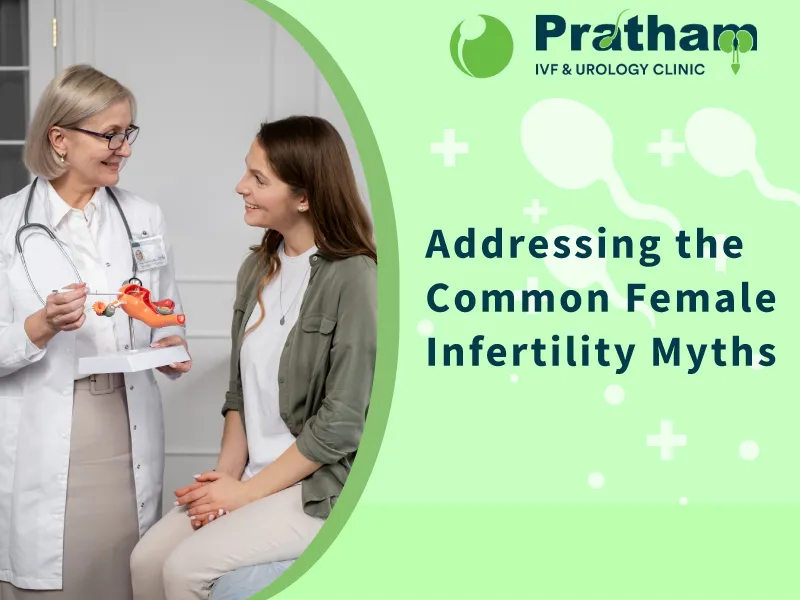
Common Myths About Female Infertility
Infertility remains a sensitive topic, and many couples feel hesitant to discuss their struggles openly. Unfortunately, female infertility is often viewed negatively and, in some places, even as a stigma. This social pressure leads many to seek unverified herbal remedies, unconventional therapies, or so-called “miracle” treatments. Stories of magical cures and quick fixes circulate widely, making it easy to fall into the trap of unproven solutions. Rather than consulting the best female infertility specialist in Ahmedabad, many couples find themselves stuck in a cycle of trial and error, wasting valuable time and resources on treatments lacking scientific backing. Pratham IVF Center believes in empowering couples with accurate information and evidence-based treatments.
It’s essential to separate myths from facts and make informed decisions when addressing infertility. Our specialists guide you through every step, ensuring you receive the best fertility care to meet your needs. Stay informed, avoid misleading advice, and trust expert guidance for your parenthood journey.
Here are some common myths women face during their infertility journey:
Myth 1: Infertility is Always a Woman's Problem
Reality:Infertility can affect both men and women. In fact, male infertility accounts for nearly half of all infertility cases. It's important to recognize that fertility issues should be addressed as a shared responsibility, with both partners undergoing evaluations and treatments if necessary.
Myth 2: If You Have Regular Periods, You're Fertile
Reality: While regular periods are often considered a sign of good reproductive health, they do not guarantee fertility.
Myth 3: Age Doesn’t Affect Fertility Until You're Much Older
Reality: Fertility begins to decline gradually with age, particularly after the age of 30. While fertility is still possible in your late 20s and early 30s, it may take longer to conceive as the quality and quantity of eggs decrease with time, which can also increase the risk of pregnancy complications.
Myth 4: IVF Is the Only Solution for Infertility
Reality: IVF (In vitro fertilization) is one option for assisted reproduction, but it is not the only solution. Depending on the cause of infertility, other treatments like lifestyle changes, medications, or minimally invasive procedures might be more appropriate and effective.
Myth 5: Stress Doesn’t Impact Fertility
Reality: Chronic stress can influence fertility, even though it's not the sole cause of infertility. Prolonged stress can disrupt hormone levels and menstrual cycles, potentially affecting ovulation and overall reproductive health.
Myth 6: You Can’t Get Pregnant After 35
Reality: While fertility declines with age, pregnancy is still possible after 35. But it might take longer to conceive, and there is an increased risk of complications during pregnancy.
Myth 7: Infertility Treatments Always Lead to Multiple Births
Reality: Although fertility treatments, such as IVF, may increase the chances of multiple births, modern technology has advanced to the point where fertility specialists can better control the number of embryos transferred.
 Ahmedabad Top Rated IVF Center
Ahmedabad Top Rated IVF Center




